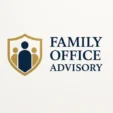Risk Management & Reporting #
Risk management and reporting provide a structured way for family offices to identify, assess, mitigate, and monitor risks across investments, operations, cybersecurity, governance, and the family itself. Because UHNW families face a complex risk environment—including market volatility, geopolitical uncertainty, regulatory changes, reputation threats, and cyberattacks—an integrated risk framework is essential for preserving wealth and long-term stability.
Context & Importance #
Families typically operate across multiple jurisdictions, maintain sophisticated portfolios, run private businesses, own real estate, and employ staff. Each of these introduces financial, operational, legal, and personal risks. A robust risk management program ensures that the family office anticipates threats rather than reacting to crises, aligns risk exposure with the family’s risk tolerance, and strengthens oversight and accountability across all activities.
Core Risk Categories #
Family offices typically categorize risks across several domains:
- Investment risk: Market volatility, interest rate changes, concentration risk, liquidity risk, FX exposure, and leverage risk.
- Operational risk: Process failures, data errors, vendor issues, fraud, and internal control breakdowns.
- Cybersecurity risk: Phishing, ransomware, account compromise, identity theft, data breaches.
- Legal & compliance risk: Jurisdictional regulations, tax compliance errors, fiduciary breaches.
- Reputational risk: Media exposure, public incidents involving family members, business controversies.
- People risk: Dependence on key staff, succession challenges, family conflicts, insider threats.
- Physical security risk: Travel dangers, home security gaps, personal safety concerns.
- Strategic risk: Poor business decisions, inadequate diversification, outdated policies.
Risk Management Framework #
A structured risk framework provides clarity on how risks are identified, evaluated, mitigated, and reported.
- Risk identification: Map all critical risks across investments, operations, governance, and personal domains.
- Risk assessment: Evaluate probability and impact, using heat maps or scoring systems.
- Risk mitigation: Implement controls, policies, diversification, insurance, and cybersecurity measures.
- Risk monitoring: Track indicators, exposures, and risk limit breaches.
- Risk reporting: Provide dashboards and reports to family members and governance bodies.
- Risk governance: Assign risk owners, escalate issues, and maintain oversight committees.
Investment Risk Management #
Investment risk is one of the most significant exposures for UHNW families. A structured approach helps preserve capital and align financial outcomes with the family’s long-term strategy.
- Asset allocation discipline: Maintain strategic weights with periodic rebalancing.
- Diversification: Reduce concentration by asset class, geography, sector, manager, and strategy.
- Liquidity planning: Monitor time-to-cash and avoid liquidity mismatches.
- Risk analytics: Stress testing, scenario modeling, VaR, beta, factor exposure analysis.
- Counterparty risk: Evaluate custodians, banks, brokers, and fund managers.
- Performance attribution: Understand sources of returns and risk-adjusted performance.
Operational & Cyber Risk Management #
Operational and cyber risks often pose significant threats and must be managed through internal controls, technology, and strong vendor oversight.
- Process controls: Segregation of duties, checklists, approval workflows.
- Data management: Reconciliation procedures, data validation, access controls.
- Vendor risk monitoring: Regular reviews of cybersecurity, financial stability, and performance.
- Cybersecurity safeguards: MFA, firewalls, endpoint protection, phishing training, secure communication tools.
- Business continuity planning: Backup systems, disaster recovery plans, alternative workflows.
Risk Reporting & Dashboards #
Effective reporting provides families and oversight committees with real-time insight into exposures, threats, and exceptions.
- Risk dashboards: Summaries of key metrics, exposures, and policy breaches.
- Investment risk reports: Volatility, drawdowns, allocation drift, concentration risks.
- Operational risk logs: Incidents, near misses, control gaps, remediation actions.
- Cybersecurity dashboards: Threat alerts, system vulnerabilities, patch updates.
- Compliance reports: Regulatory filings, tax compliance checks, audit readiness.
- Escalation reports: Issues requiring immediate family or committee attention.
Implementation & Best Practices #
- Create a risk policy: Document governance, definitions, thresholds, and responsibilities.
- Integrate risk in decision-making: Include risk assessments in all major investment and operational decisions.
- Use risk committees: Include family members and independent experts.
- Adopt risk technology: Use platforms for monitoring exposures, scenario analysis, and reporting.
- Establish clear escalation paths: Define when issues must be reported to leadership or the family council.
- Audit risk controls: Conduct regular internal or external audits to identify gaps.
- Train stakeholders: Ensure family members and staff understand risk responsibilities.
- Maintain insurance coverage: Evaluate cyber, liability, D&O, property, and specialty insurance.
- Document all risk decisions: Maintain audit-ready records of evaluations and approvals.
Common Challenges #
- Lack of centralized risk ownership.
- Fragmented data across custodians, vendors, and systems.
- Underestimating non-financial risks (cyber, people, reputation).
- Inconsistent risk reporting formats.
- Overreliance on a single vendor or internal key person.
- Failure to update risk thresholds during life events or market shifts.
- Insufficient stress testing for extreme scenarios.
See Also #
- Strategic Asset Allocation
- Cybersecurity & Data Privacy Controls
- Wealth Reporting & Performance Analytics
- Family Governance
- Liquidity Management & Treasury




